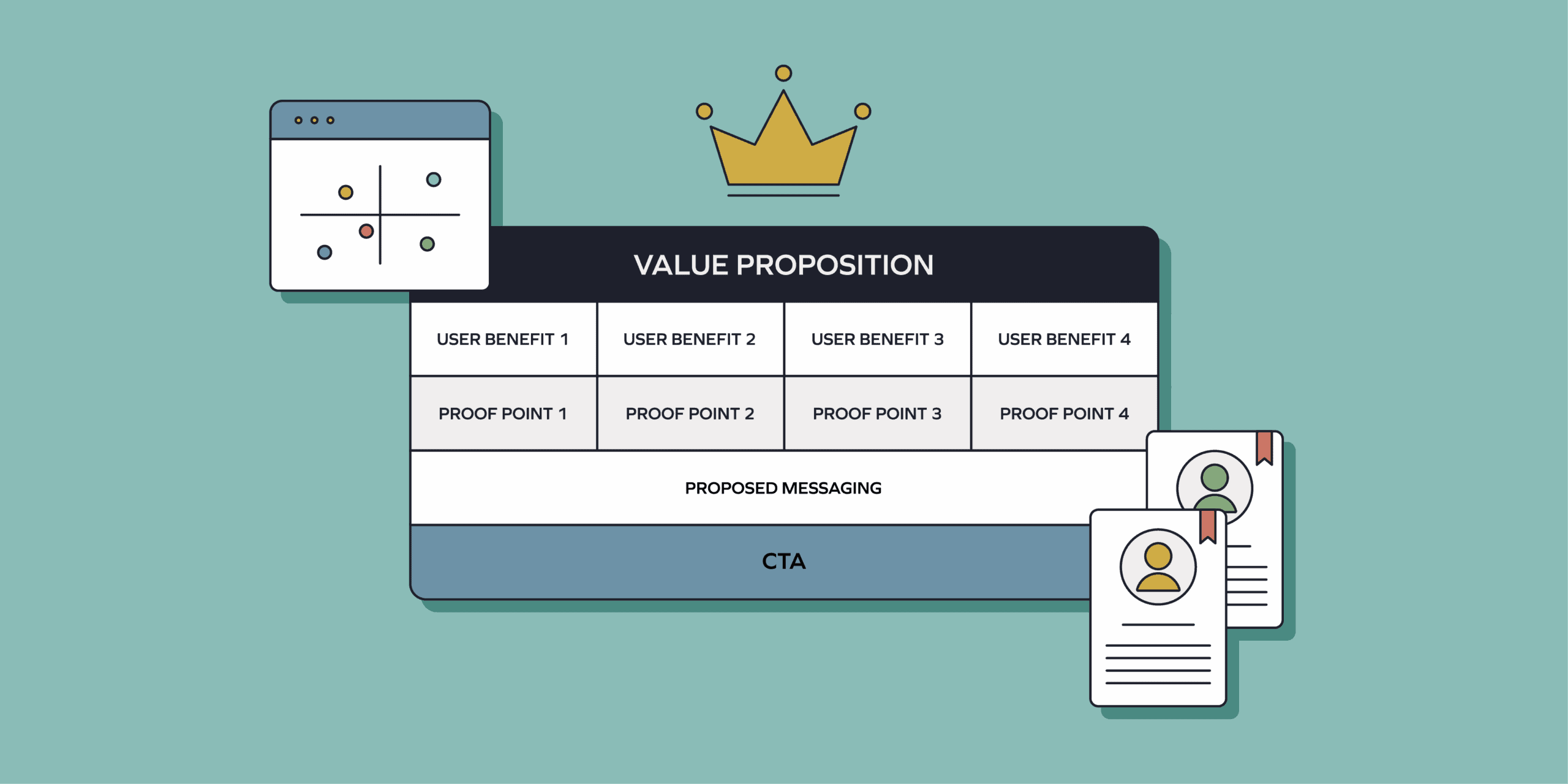Crafting the perfect B2B go-to-market value proposition
18th September 2025 •
18th September 2025 •

In today’s competitive technology and industrial landscape, standing out from the crowd when you go to market requires more than just a great product. You may have the most innovative solution available, but if you can’t clearly articulate why it matters to your customers, you’ll struggle to gain traction. This is where a strong value proposition comes into play.
For complex B2B products, the challenge is even greater. Multiple decision-makers, long sales cycles and technical considerations mean that a generic pitch won’t cut it. You need a clear, compelling value proposition that resonates with your audience and highlights the tangible business outcomes you deliver.
As a leading B2B go-to-market agency, we know a thing or two about crafting a compelling value proposition. And if you’re interested in what we do and how we do it, read on.
A value proposition is the most succinct way of explaining the value a brand can offer its customers. Ideally, it should address an audience insight, and balance user needs with the brand’s key differentiator. It’s all about finding the sweet spot between the brand’s business strategy and the audience’s pain points.
In B2B in particular, it’s not always simple to distil down to the true value of a product or a service. Being able to condense internal strategy decks and every stakeholder’s input into a value proposition isn’t a job for the faint-hearted. It requires a deep understanding of a brand’s vision and mission, its market, competitors, and ICP (Ideal Customer Profile).
With all these insights gathered, the next challenge is how to structure the information. In terms of hierarchy in a messaging framework, the value proposition is right at the top. The first consideration. It should feed into all the messaging that follows, and everything else in the messaging framework should justify and support the value proposition.
A strong value proposition is clearly aligned to the brand’s proof points and there should always be a logical flow. You should always be able to trace the train of thought. With that in mind, every value proposition we create for clients includes a rationale to explain our thinking and why it works for the brand and its customers.
When selling in consumer markets, value propositions often focus on emotional appeal or immediate gratification. In B2B, the picture is more complex.
Here’s why:
That’s why your value proposition must strike a balance. It needs to be technically credible, but still focused on the business outcomes that matter to decision-makers.
The rational side of a B2B value proposition is important. But don’t forget that B2B buyers are still human – you also need to affect how people ‘feel’ about your proposition and brand. This is where the nuanced skill of using language to combine technical credibility and commercial relevance with language that’s approachable, ownable, and memorable comes into play.
Ultimately, you want the value proposition to impact both sides of the human brain – the rational and the emotional – so that audiences understand how you can solve their challenges and believe that you are a credible brand. This is what drives brand recall, and determines whether or not you’re included in their day-one list of potential suppliers once they’re ready to buy.
The first step is to know your customer inside out. Go beyond demographics and dig into their priorities, pressures, and pain points.
The more you can map your solution to these drivers, the stronger your value proposition will be.
What makes your solution different? In the industries we specialise in, we often find that the points of differentiation, although sometimes nuanced, include:
Be specific. Statements like “we improve efficiency” lack impact without context. Make sure that the value proposition has substance, and truly reflects what the business offers and what the audience needs. If you don’t know your business strategy or audience needs in detail, then you shouldn’t be looking at developing value propositions at this stage.
Customers don’t buy features – they buy the outcomes those features deliver. Technical specifications matter, but they don’t sell by themselves.
For example:
Always ask: “So what?” after each feature until you get to a tangible business impact. Ideally, you would also group them, and work out which features support the same overarching benefits. The way that we categorise features and services is specifically tailored to every client we work with. In B2B, decisions are influenced by trust, confidence and reduced risk. We believe in building strong brands that establish brand affinity (emotional response) and brand equity (credibility).
In complex industries, it’s tempting to pack a value proposition with technical jargon. Resist that temptation. Instead, always use a simple, conversational tone. A value proposition should be easy to grasp in seconds. Aim for one sentence, with a supporting sub line. Taking the time and effort to distil a value proposition to its essence makes it much more memorable and likely to be repeated by any member of the client’s team.

When we helped Autodesk go to market with a next-generation VR workspace tool, developing the right value proposition was vital to the project’s success. After conducting a comprehensive competitor analysis, looking for insights and opportunities that Workshop XR could leverage, we invested time in really getting to know the key influencers who would benefit from the product – architects, engineers, BIM/VDC managers, and directors of tech. Delving into their current workflows through one-to-one user interviews, we built a strong understanding of what was working and what wasn’t. Particularly when it came to how they collaborated with their team.
Using our findings from the in-depth market research and stakeholder interviews, we identified the key user benefits and Workshop XR’s points of differentiation, such as alignment, fluidity, and accessibility. As we started to agree on our product and user benefits, we built out a messaging matrix, detailed value propositions, and narratives to essentially refine Workshop XR’s ‘elevator pitch’. There was plenty to say, so the key challenge was making it as concise and compelling as possible – based on what we knew the audiences cared most about.
With a ground-breaking product to showcase, the value proposition had to pack a punch. After exploring all kinds of angles, and running longlists and shortlists by the Autodesk team, we agreed on, “Change your perspective. Elevate your understanding.” This value proposition distilled the product offering down to why it’s revolutionary (the first-person, human-scale experience) and the value it brings to design reviews (the ability to catch issues, sooner).
Read the full story of how this value proposition helped drive the go-to-market strategy for Workshop XR.
When you start to have discussions about developing value propositions for go-to-market projects, there are some of the burning questions you’ll want answered:

At Torpedo, we specialise in helping businesses sharpen their go-to-market strategies. Whether you need to elevate your messaging, align your teams, or develop a proposition that truly resonates with your audience, we’re here to help.
Get in touch with our Content Team today to start crafting a value proposition that sets you apart and drives real, sustainable growth.
Get in touch